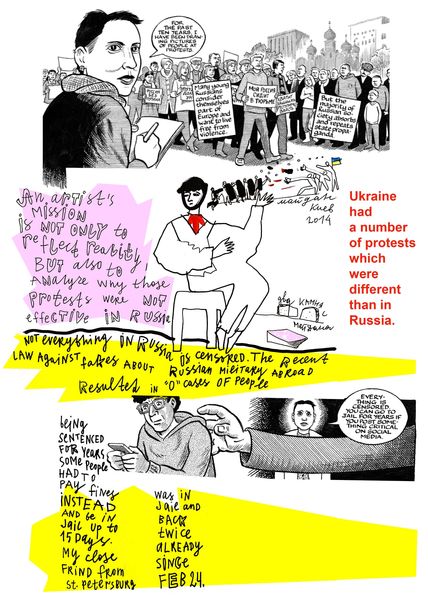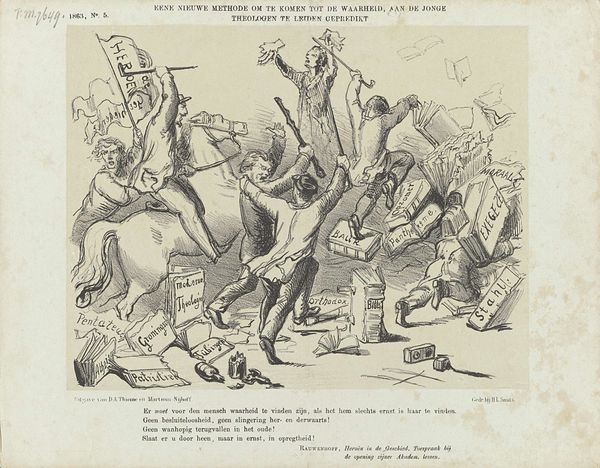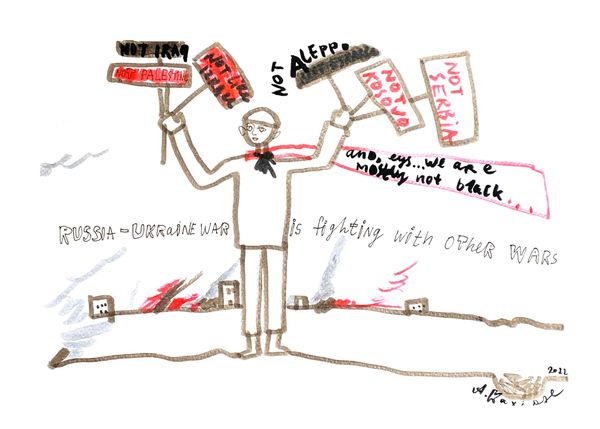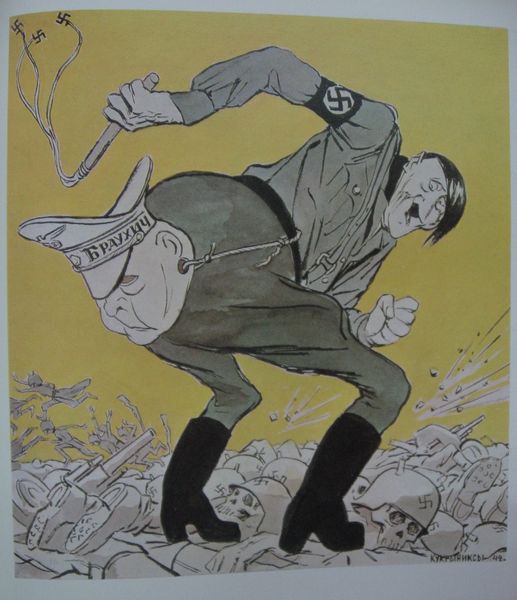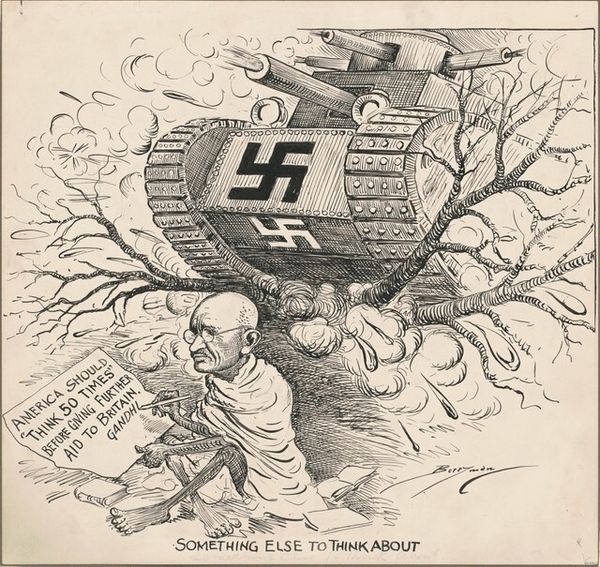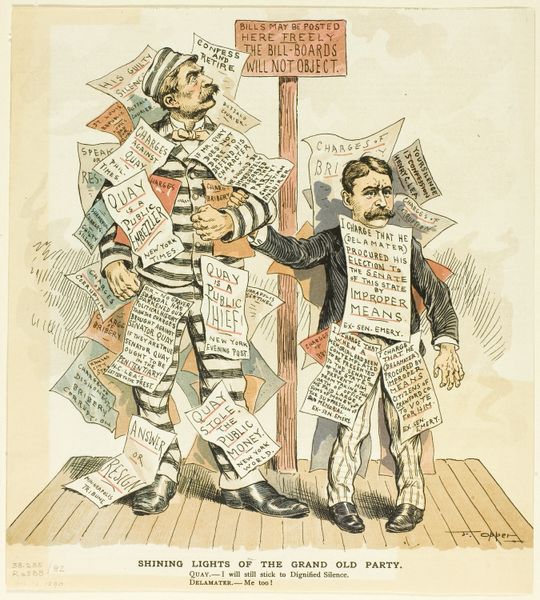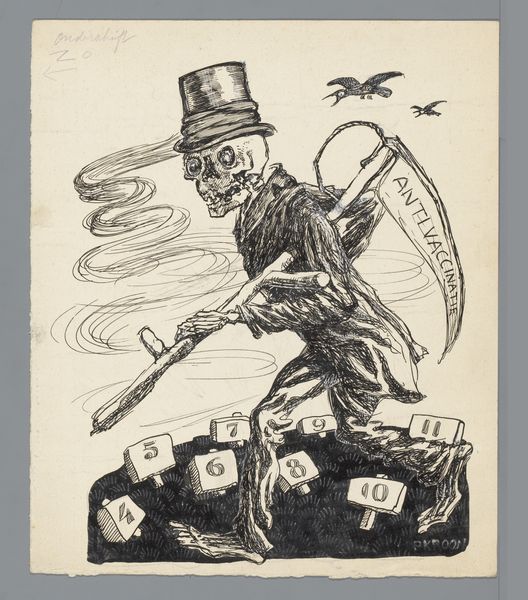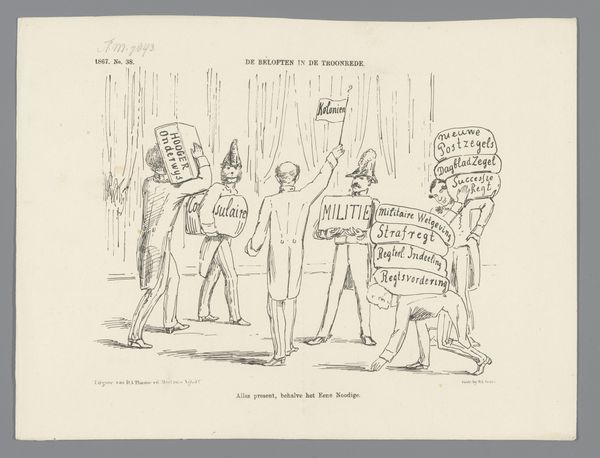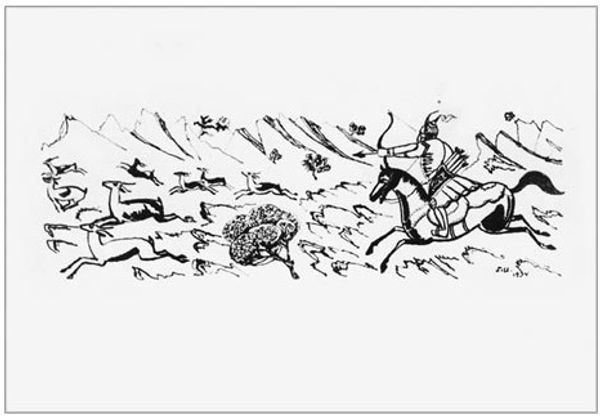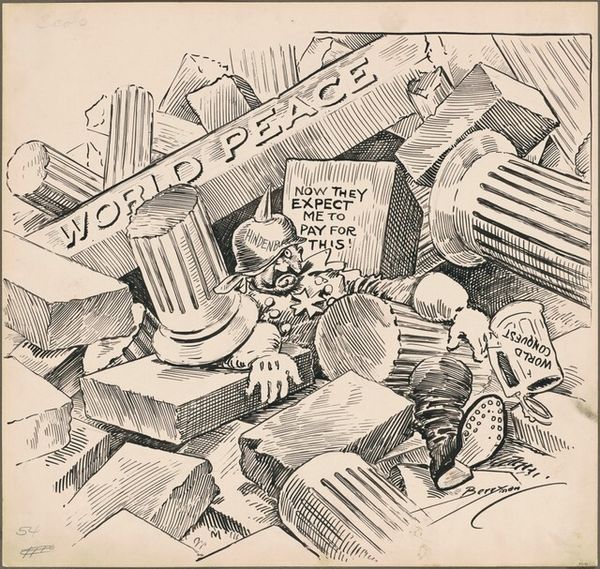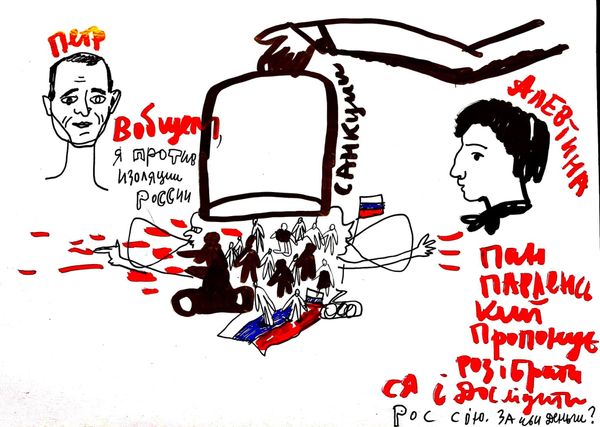
graphic-art, mixed-media
#
portrait
#
graphic-art
#
mixed-media
#
narrative-art
#
caricature
#
group-portraits
#
history-painting
#
cartoon carciture
Copyright: Sue Coe,Fair Use
Curator: "Plague" by Sue Coe is a complex mixed-media graphic art piece with an unsettling composition. What strikes you initially about it? Editor: The monochromatic palette, dominated by muted browns and greys, evokes a feeling of decay and disease before I even register the subject matter. The visual field seems tilted, unstable. Curator: Indeed. It’s interesting to note the central figure in this piece. Its body seems transparent, like a ghostly shroud made of words that spells out “Swift Change”. Etched upon it are terms like “oil spills, war, intolerance, and famine” that lead further into a cascade of ominous warnings with words such as "global warming" and "ethnic cleansing". All set within a field littered with bodies below an American capitol building backdrop. It powerfully suggests a link between political actions and disastrous consequences. Editor: The layering is fascinating. There's a visual hierarchy at play with the ghostly body standing tall over the literal bodies on the ground in sepia. I am drawn to the way the transparent human figure imposes this very idea of "change" looming over Washington as its devastating impact in a time of plague on the nation. It’s very haunting with such strong historical references. Curator: Right. We should consider the political moment when the image was created, seemingly capturing the cultural pulse of 2000 through this allegorical landscape of corruption, devastation, and policy failures. Editor: Is that Richard Cheney’s head on the television? How incredibly effective and horrifying this artwork presents its theme as the head watches the effects of change as if he knows all too well what impact his involvement could potentially invoke. It forces the audience to think on the future consequences, not the present promises of the time. Curator: Absolutely. It encapsulates a visual embodiment of collective fear and skepticism about unchecked power. The artist brings in narrative elements as social critique. It allows the artwork to be a vessel containing many conversations, a stark message rendered through poignant symbolism. Editor: It leaves you pondering the very nature of progress itself. The form here, through its calculated use of grayscale tones and layering, compels us to dissect those visual associations as we unpack the cultural anxiety it presents, and ultimately reveals our collective potential for enacting true healing and reconciliation.
Comments
No comments
Be the first to comment and join the conversation on the ultimate creative platform.
